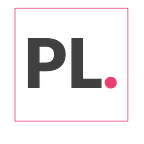Leveraging Behavioral economics to craft Google Campaigns
Most people think they have a good handle on why they make certain decisions. Dan Ariely, Professor, Behavioral Economics, Duke University, says otherwise.
“People often think that they’re making decisions, but in reality, their decisions are very much determined by their environment,” he says.
In an age of digital distraction, shortened attention spans are here to stay in the world that doesn’t go quiet and thus making the lives of marketers difficult vying for attention span.
It is here consumer psychology comes handy, and you can craft Google AdWords campaigns and nudge (we will come to this in a while) your campaigns to achieve greater success.
Here are few consumer psychology ideas, but before we move into the details a small primer on aspects you would need. The principles mentioned are platform-agnostic and can be applied for display campaigns across platforms.
NUDGE MARKETING:
Nudge in simple words is an alternative way of presenting choices to help people persuade to make better choices, without making any changes to the original options available. To make the nudge effective, choices will have to be reframed but never restrict them.
Politics & behavioral economics have leveraged principles of Nudge theory for decades but soon caught the attention of the world in other streams around the 2008 book by economists Richard Thaler and Cass Sunstein — NUDGE.
The best example around this can be Google Maps, which nudges its users with suggestions around the best/alternative route available.
In nudge theory, there is always a choice provided to the consumer to say no, and choices are not mandated.
The idea here is to craft our campaigns in a way to reduce the friction almost making it closer to default choice ‘NO’. Though at the same time not manipulating or misleading the potential customer about the product. This is called a “default,” and it is the path of least resistance.
PERSUASION ARCHITECTURE & AD CREATIVES
As per the Australian study, conducted by Usableworld.com.au, Humans are naturally drawn to other human faces.
The human faces also take instant attention in comparison to ad copy, as you can see from the heatmap analysis of the two images, the focus instantly shifts from the face to the message baby’s face is looking at.
PRODUCT FEATURES KEYWORDS:
Product keywords can play a great role in crafting the choice of default example:
Identifying product attributes & keywords can help. This is different from keyword targeting that you would use to identify the right intent or audience.
Using keywords on your ad creatives that echo with your audience can significantly improve your CTRs.
Case in point, Google’s Chromebook, tries to cover one product feature in different words to interact with different sets of customers.
Tip: A great way to merge the two can be to run a gif. Ad creative
Effective messages help the decision-making process by pointing out specific characteristics that encourage action based on the shopper’s goals.
Though limit your product features to a minimum of 3, keeping in mind that you also need to create a more simplified architecture.
GO WITH SOCIAL PROOF
Robert Cialdini, author of Influence: The Psychology of Persuasion, writes that people are more likely to find actions appropriate when others are doing them.
This can be achieved via two ways
One — where you have a credible study to corroborate your product superiority.
Two — you focus on product acceptance and usage.
Three — testimonials could be another way you can explore social proofing.
CREATE SOME URGENCY
Human by nature are risk-averse, that means to avoid risk. That’s how our primitive forefathers survived by avoiding risk. This leads to the theory of loss aversion, that people suffer from losing more than they enjoy winning.
The urgency has been a tried-and-tested retail strategy, e-tailers and e-comm companies have leveraged the strategy in their creatives.
ANCHOR YOUR PRODUCT UPFRONT
The famous photo while Steve Jobs introduced iPads’ pricing is the classic case of anchoring reminiscent of anchoring effect.
“What should we price it at?” he asked. “If you listen to the pundits, we’re going to price it at under $1000, which is code for $999.” He put a giant “$999” up on the screen and left it there before finally going on. “I am thrilled to announce to you that the iPad pricing starts not at $999,” said Jobs, “but at just $499.” On-screen, the $999 price was crushed by a falling “$499.”
The “anchoring effect” is relatively first impressions on pricing and if you can form this as part of the copy, the CTRs can rise up considerably.
Consumer psychology helps you understand your customers’ behavior better and identify the right nudges you need to design to amplify your marketing efforts.
In times when we find everyone vying for consumers’ attention, and we all grapple with attention deficit.
Let’s start to understand human nature a little better, hear the unmet and unheard demands, and tweak our campaigns to provide the right experience to our online customers.
